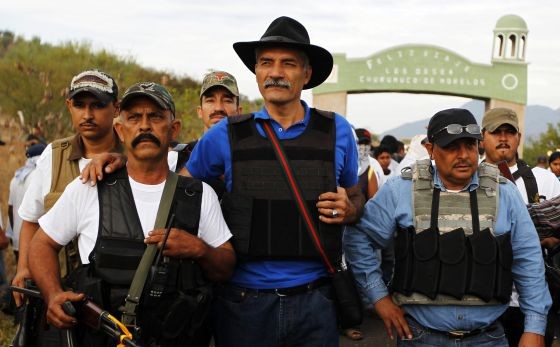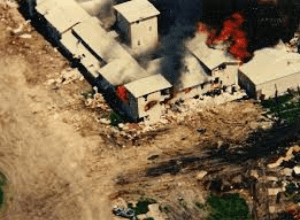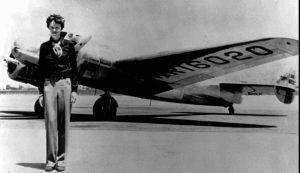It is estimated that, by the 1980s, Mexico’s drug cartels were slowly forming and beginning to operate. By the early 2000s, their presence was increasingly felt through the wave of violence and crime that struck Mexico. This would propel the issue of drug cartels and how to deal with them to the forefront of Mexican public policy. In 2006, newly elected Mexican President Felipe Calderon was faced with stopping the onslaught of violence and crime. Just days into his term, Calderon sent 6,000 Mexican soldiers to the state of Michoacán to combat drug cartels in the area.1 This marked the start of the drug war in Mexico. Almost 12 years later now and the success of the drug war is still questionable. It is estimated that around 50,000 to 70,000 have perished in Calderon’s term alone and to date around 25,000 more have vanished without a trace.2 In some parts of the country, cartels have established themselves as the sole authority there.3 Facing record levels of crime and violence, some citizens in Michoacán have taken action into their own hands by forming self-defense forces.

The development of self-defense forces in Michoacán culminated from many factors. Michoacán is a central state in Mexico giving it an ideal location to be able to move things all over the country quickly. It is located along the coast, providing the option to export drugs via sea. Its economy is largely based on agricultural and mineral resources. Michoacán is known for cultivating avocados and lemons and for the many precious minerals that are mined in the state.4 These characteristics, unfortunately, make it an ideal location for drug cartels who send their drugs to different parts of Mexico and into the United States. In 2006, the state of Michoacán found itself crippled by drug violence and the state was a battleground for different cartel groups vying for control. Under Calderon’s orders, federal Mexican security forces were to combat the cartels and restore order to regions that were under cartel influence. This only led to violent confrontations between security forces and the cartels which ultimately increased the levels of violence and the death toll. The government was largely ineffective in fighting the cartels due to rampant corruption among officials.5 Overwhelmed and out gunned, the Mexican government went as far as calling on the UN to prevent the flow of high-powered weapons from getting into cartel possession.6

The first self-defense forces to form in Michoacán, formed in the city of La Ruana. Here, farmers were under the constant threat of violence and forced to pay protection money to the cartel. The cartel regulated the local agricultural economy and controlled where the farmers could export their produce and to whom they could sell. Cartels also imposed required payments on produce.7 In one such instance of enforcing control, it is reported that several tons of lemons on their way to be delivered were destroyed. In response to such an act, local farmers and field workers formed the first self-defense group to defend themselves, their land, and their produce. The cartel then cut off the city from receiving supplies in an effort to cripple the resistance. The self-defense group would begin to look for others to come to its aid and break the blockade. 36 other similar groups formed around Michoacán. In Tepalcatepec, after facing similar abuses as in other regions of Michoacán, the local livestock association voted to transform their organization into a self-defense force. Other community leaders around Michoacán were present as well when the various self-defense forces were integrated into one entity. It was then that Jose Manuel Mireles Valverde became a prominent leader of the Michoacán self-defense forces.8 By March of 2013, the movement had grown from around 250 to 600, and some press releases from the self-defense forces claimed they were up to 3,000 strong.9
Jose Manuel Mireles Valverde was a medical doctor. In 2013, he was taken hostage, tortured, and only released after his ransom was paid. During the same time, several members of his family were murdered. His neighbors were beheaded and their heads put on display. Due to his own experience with the cartel, he felt compelled to join and lead the self-defense forcesmed. In Teplacatepec, Mireles’ charisma propelled him through the ranks and he became a leader in the organization and its main spokesperson. Under the leadership of Jose Mireles, the self-defense forces spread to other parts of Michoacán. In his role, Mireles became a national figure of resistance that many loved and others, including the government, despised.10
At their peak, the self-defense forces took control of approximately 30 towns around Michoacán. Eventually, the self-defense forces found themselves mired in controversy. By taking up arms and at times opposing state officials, the federal government cracked down against self-defense forces. Legally speaking, the self-defense forces were in violation of Mexico’s Firearms and Explosions Act by arming themselves and thus faced a legal predicament of establishing themselves as a legitimate group. In addition, they opposed the various cartels and the government because corruption was rampant among government officials who work alongside the cartels. The group refused to lay down their weapons despite threats of imprisonment and to be forcefully disarmed.11 Jose Mireles, was the primary targeted of government actions because of his prominent role. Eventually, he alongside dozens of self-defense forces was arrested. The group’s imprisonment was nothing short of controversial and ultimately displayed the attitude the Mexican government had towards its citizens who were simply trying to restore order in their state. Mireles was imprisoned, and after a public apology, his charges were dropped but he remained in custody for almost 3 years.12

Ultimately, the self-defense forces had to disband and some were absorbed by a newly created police force. After some began to question the leadership of Mireles and Mireles’ imprisonment, there was no longer clear leadership. Mireles’ bodyguard, a man by the name of Estanislao Beltran, who is more popularly known as “Papa Pitufo,” “Papa Smurf,” had also risen among the group and many followed him. The newly created rural police force was a subject of much contention and despite Mireles’ opposition to it, Estanislao Beltran and those who chose to follow him joined the new force. The rural police force operated similar to the self-defense force groups but had its authority come from the government and ultimately was controlled by the government. Other groups disbanded and went back to their normal lives, refusing to join. In Michoacán, this ended the rise of self-defense forces.13
The self-defense forces that formed in the Mexican state of Michoacán, formed out of a need to protect the rights and security guaranteed to all persons that the government could not provide. This group of citizens took it upon themselves to restore law and order, protect themselves, their communities, and their livelihoods. Mireles various times explained that their movement had grown so large because everyone in Michoacán had experienced some sort of pain caused by the cartel. He believed that by trying to secure the basic rights that they are entitled to by their governments and by being supported by the people, that they had legitimacy. They removed corrupt officials who worked with the cartel. They began as rag-and-tag armies that soon developed into a well-armed, efficient fighting force that was able to push the cartels out of areas that the federal forces for years had failed to do.14 Since their inception, they requested the support of the government in their mission and while there was limited coordination between the two, ultimately the government came to oppose them and see their downfall as if they themselves were a cartel.15 In some instances, government forces failed to act entirely as the cartels decimated cities, leaving it up to self-defense forces to protect the people.16 They faced a choice of being institutionalized into the corrupt system that had forced them to take action or remain insubordinate and put into question the legitimacy of the Mexican Government. It was never the mission of the self-defense forces to overthrow or undermine the legitimacy of the government. While they claimed legitimacy by being supported by the people, they tried to step in and fill the role of protector that the Mexican government could not provide. Considering the shortcomings of the Mexican governments, it was not ill-placed to rise up and create these self-defense forces, but by doing so undermined their own legitimacy. But in such a corrupt system how else could they bring about change? It was and continues to be the Mexican government who his culpable of the injustices suffered by, not only the self-defense forces in Michoacán, but by Mexican citizens all over the country who continue to suffer at the hands of vicious drug cartels. The self-defense forces of Michoacán represent a desperate effort ultimately stifled into silence and complacency.
In the past couple of years, there has been a resurgence of violence. Since the dismantlement of the self-defense forces, Michoacán continues to be one of the most violent states in Mexico. Jose Mireles has continued to be a critic of a government for its inability to reestablish law and order in Michoacán and other parts of Mexico. The 2018 election of Andres Manuel Lopez Obrador as Mexico’s new President suggests change and a call to action by Mexican citizens all over the country to end the violence that has plagued them. There will be much anticipation to what his administration will do when his government takes power on December 1st, of this year (2018).
- Antonio Fuentes Diaz and Guillermo Paleta Perez, Violencia y Autodefensas Comunitarias En Michoacan, Mexico, Iconos, Revista de Ciencias Sociales, no. 53 (September 2015), 175. ↵
- Alejandro Rodiles, Law and Violence in the Global South: The Legal Framing of Mexico’s ‘Narco War, Journal of Conflict and Secuirty Law, no. Issue 2: 269. ↵
- Andres Galeana Abarca, Ungoverned Spaces in Mexico: Autodefensas, Failed States, and the War on Drugs in Michoacan, (2014), 13-19. ↵
- Antonio Fuentes Diaz and Guillermo Paleta Perez, Violencia y Autodefensas Comunitarias En Michoacán, Mexico, Iconos, Revista de Ciencias Sociales, no. 53 (September 2015), 175-176. ↵
- Antonio Fuentes Diaz and Guillermo Paleta Perez, Violencia y Autodefensas Comunitarias En Michoacán, Mexico, Iconos, Revista de Ciencias Sociales, no. 53 (September 2015), 174. ↵
- “Mexico Calls on UN to Help Control Flow of High-Powered Weapons to Drug Gangs,” UN News, (September 2011). ↵
- Enrique Guerra Manzo, Las Autodefensas de Michoacán, Politica y Cultura, no. 44 (October 2015), 16. ↵
- Antonio Fuentes-Diaz, Narcotráfico y Autodefensa Comunitaria En Tierra Caliente, Michoacán, México / Drug Trafficking and Community Self-Defense in Tierra Caliente, Michoacán, Mexico, CiencaUAT, (Universidad Autonoma de Tamaulipas, 2015), 76-77. ↵
- Enrique Guerra Manzo, Las Autodefensas de Michoacán, Politica y Cultura, no. 44 (October 2015), 13. ↵
- Matthew Heineman, Tom Yellin, Jose Mireles, and Tim Foley, Cartel Land, (Hollywood, California) Paramount Pictures, (2016). ↵
- Matthew Heineman, Tom Yellin, Jose Mireles, and Tim Foley, Cartel Land, (Hollywood, California): Paramount Pictures, (2016). ↵
- Maria Verza, “Mexican Judge Grants Vigilante Leader’s Release on Bond,” AP English Worldstream- English, Associated Press DBA Press Association (May 2017). ↵
- Enrique Guerra Manzo, Las Autodefensas de Michocacan, Politica y Cultura, no. 44 (October 2015), 17. ↵
- Matthew Heineman, Tom Yellin, Jose Mireles, and Tim Foley, Cartel Land, (Hollywood, California) Paramount Pictures, (2016). ↵
- Enrique Guerra Manzo, Las Autodefensas de Michoacán, Politica y Cultura, no. 44 (October 2015), 17. ↵
- Enrique Guerra Manzo, Las Autodefensas de Michoacán, Politica y Cultura, no. 44 (October 2015), 21. ↵



54 comments
Rhys Kennedy
I find that this article highlights very well the measures that these farmers and general citizens are being forced to take in order to protect themselves and their assets. When one can no longer rely upon the institutions that are meant to protect them, or in this case, when they are actually working against them in some capacity, one can only rely on self-protection. The last paragraph has definitely encouraged me to hope that there has been some change that has already happened, and after posting this I will be looking to see for any developments over the past two years.
Eliane Castorena
The article is very interesting because I feel a lot of people are aware of what is happening in Mexico with the drug cartels, but most do not realize that the government does not do much to help the innocent citizens and they have to come to these extreme measures. As mentioned in the article, the autodefensas took it upon themselves to protect their land and theirselves from the violence that terrorizes them everyday. Great read!
Thiffany Yeupell
Sometimes doing the right thing will land you in more trouble than warranted. As we can see in the farmers’ and Mireles’ case, the desire to protect their family and assets was a losing battle. With the internal corruption of the government, who was dealing with the cartel, their form of resistance and protection would have to deal with the heavy hand of the government. And it truly is sad to see such an outcome due to the dangerous and corrupted dealings that are ongoing with the Mexican government and the drug cartels. But there is still an opportunity for change with Mexico’s new president, Andres Manuel Lopez Obrador, for which the changes can be seen, little by little.
Francisco Cruzado
I felt completely submersed by the narrative: it was almost as if I was watching a short documentary. The theme of autodefensas is certainly one that can be deemed as Latin-American in the recent history. Peru experienced similar catastrophes during the 80s, and wittnessed various self-defense committees being formed and armed: it certainly worries that numerous political entites do not find feasible a side-by-side job with the local communities when facing the question of how to to end up civil-war-like violence (as it is guerrilla terrorism, drug trafficking, and gang terror)
Celeste Flores
Drugs, cartels, and corruption have completely ruined Mexico. The government made a wrong decision when they started fighting the cartels back, as crazy as it sounds, everything was better when they let them do their thing. We could all co-exist and our society was not dangerous. Auto self-defense forces are just one small part of the terrible consequences cartels have had in Mexico’s society. I could write a whole essay on how my life was negatively impacted by cartels, but the one thing that comes first to my mind is the fact that I was not allowed to go to college in Mexico and I had to come here, far away from my home and my family.
Alin Bocardo Felix
Cartels and drug trafficking is a major issue even now, as Americans in the United States drive the drug industry. Mexico has been corrupted for decades, slowly eating itself from the inside out, even after Calderon, Penia Nieto and their current president, who are believed to just being elected to continue these drug traffics. The city of Michoacan is mentioned, but Obregon and the entire state of Sinaloa are major issues in drug issues.
Sebastian Azcui
Drugs and corruption are a very big thing in Mexico and it is something scary. Different cartels have such a heeavy influence on the government and have power over many things. A lot of people are affected by this cartel power and control as not everyone feels safe and lose their lives and walking through the streets becomes dangerous. This article was very deep sharing some stories on how it is living in Mexico and experiencing this Narco power and influence.
Saira Locke
In my family, Mexico has always been a dangerous place because of what we have heard in the news. Things like tourists getting kidnapped and murdered and just the excess of violence from the cartels is very frightening. My family used to travel to Mexico for family vacations but since the recent increase of violence, we have to always choose areas away from Mexico just for our personal safety. Mexico’s government needs to get a grip on their extreme violence to make it safer for tourists and they could make more money.
Sofia Martinez
This articles is very important to highlight the corruption that is happening in Mexico; especially the corruption inside the government that influences violence and trafficking in the country. It is also important to remember those who were victims of the violence and the people who tried to fix the system, gain justice and find a solution on finding a better life to live.
Jose Chaman
Really interesting article. It is completely true to say that the corruption in Mexico has it engender in the cartels and their power upon the government. This problem spreads to the neighboring countries from Latin America, and also to the U.S., where a lot of this cartel leaders had fled. Nonetheless, the city of Michoacán is submerged in a harsher scenario, hopefully the government will solve this as soon as possible. I really liked how the article deepened into this important topic.